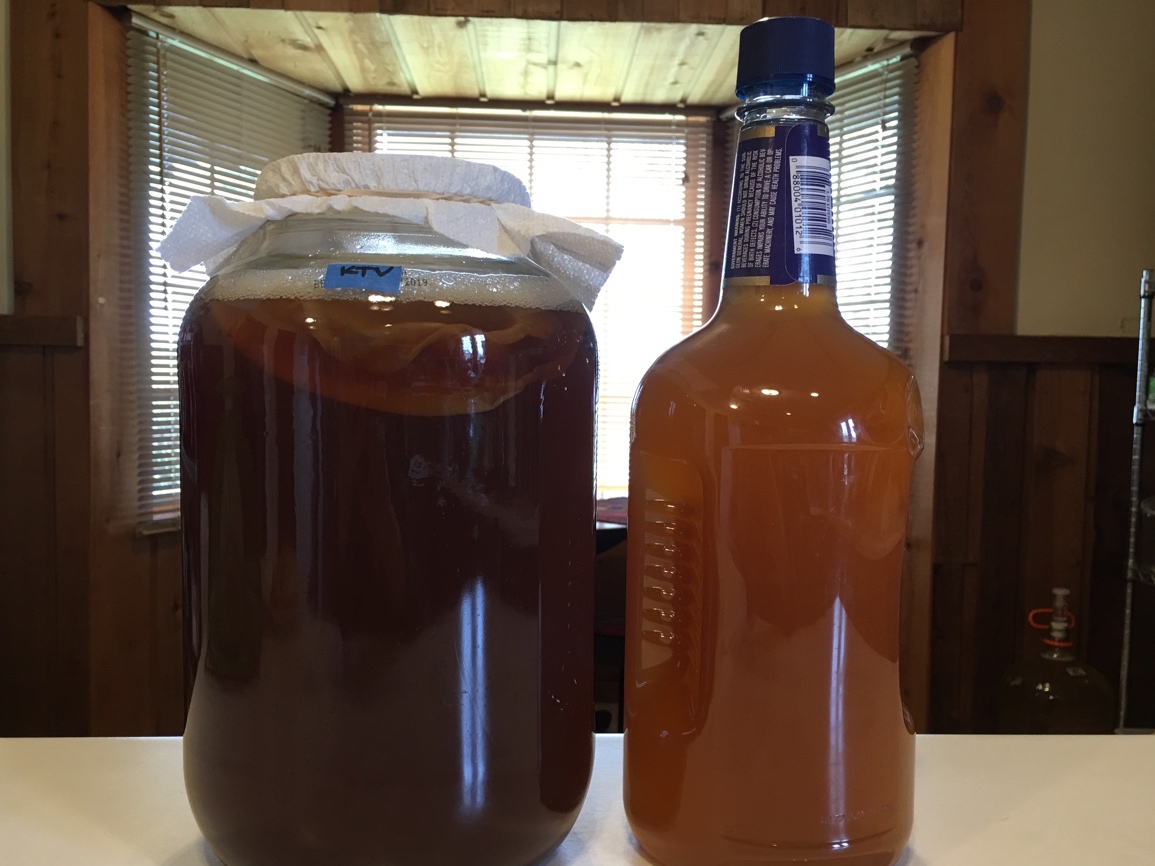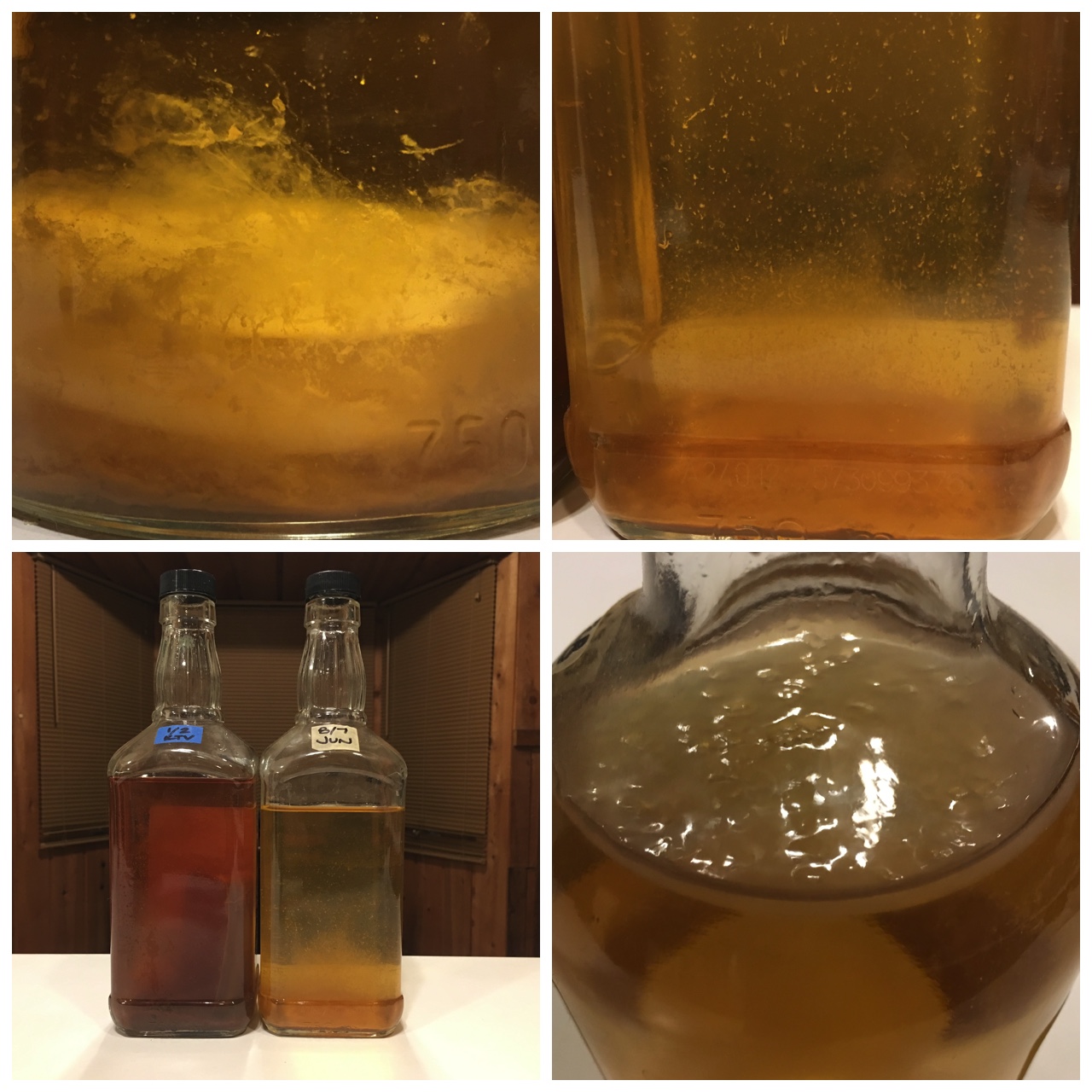
I have a jar that’s devoted to making kombucha vinegar. It began that way, not as a jar of kombucha tea that fermented for too long. Why do I make vinegar? Let me count the reasons…
Like many people, I used to buy raw apple cider vinegar (ACV) – you know, the kind with the “mother”. I think I typically paid around $8 for a quart-sized bottle, and used the raw ACV as a probiotic boost in water (for humans and fowl); a hair rinse; a facial toner; as a wound cleanser; and a tasty salad dressing ingredient. Very useful and versatile, indeed. But at $8 a bottle?
Once I started making my own ferments, I realized that making vinegar was easy and economical. Fruit scrap vinegar, for example, may be made from fruit peels, cores, and bruised or damaged (but not moldy) flesh; in other words, waste parts. You can even save up pieces of fruit scraps, freeze, and make vinegar later, when you’ve collected enough. Add dechlorinated water, sugar, and time, and it becomes vinegar. Easiest magic ever!
I routinely make vinegar from kombucha tea, primarily because I add leftover tea from the morning’s pot – tea that I might otherwise dump out. I collect leftover tea in bottles in the fridge until I have enough, then I brew some full-strength tea, add the bottled tea, sugar, water (if needed), and finished KT as a starter, along with a SCOBY. The brew just sits for weeks, even months, then I strain it into bottles and start the whole process over again. I have a collection of vinegar of different ages, including some over a year old. Sometimes, small SCOBYs form inside the bottle – some are even square because of the bottle’s shape. These SCOBYs can be used as “backups” in the event that my main working SCOBYs become contaminated (though this hasn’t happened yet). In the event that I need to remove one from a bottle with a narrow neck, I simply fish the SCOBY out with a nut pick – the sharp hook on the end allows me to grab the SCOBY’s edge and gently pull it out.

Another useful and tasty product that can be made using vinegar as a base is herbal vinegar. Just as it sounds, it’s made by adding edible flowers, fruit, and/or herbs to vinegar and letting it infuse for as long as a month, during which the vinegar will pick up flavors from the ingredients you choose to add. Looking for recipes? Check out this post from The Herbal Academy.
Interested in using raw vinegar for your fowl? The general consensus is that the appropriate ratio is about a tablespoon of raw vinegar per gallon of water. For the chickens/ducks/guineas/geese, I just splash a little from a bottle into a gallon plastic (don’t use with metal, as the acidity can corrode some metals) pail, most often during the rainy/muddy season; I avoid putting vinegar in their water during particularly hot times of the year to avoid the risk of acidosis. Based on what I’ve observed, the fowl enjoy the vinegar-spiked water – some rush to drink immediately after they see the vinegar added. The health benefits are anecdotal, of course, but our fowl are healthy and happy, and that’s all the proof I need.
Finally, let’s not forget about adding a delicious twist to cocktails with raw kombucha vinegar – it really adds delightful “sour” to a whiskey sour. Cheers!

Comments are closed.